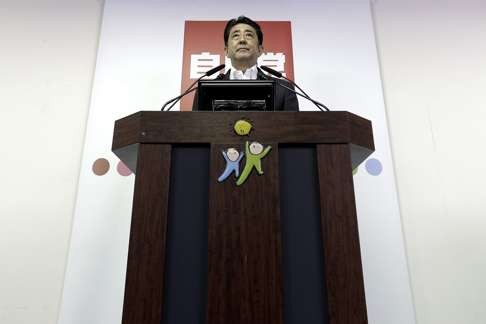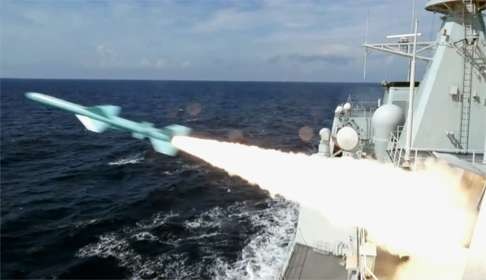
Hague ruling on South China Sea must not fuel Asia’s arms race
Thitinan Pongsudhirak says China, whose rise threatens regional stability and sparked the military build-up, should be given some room to recognise the dangers of its own aggression
The ruling against China’s territorial claims in the South China Sea by the Permanent Court of Arbitration in The Hague will be met with relief in the region’s capitals. But it is unlikely to reverse one of Asia’s most worrying trends: an alarming regional arms build-up.
According to the Stockholm International Peace Research Institute, Asia now accounts for almost half of the world’s arms expenditure, which is more than twice the total expenditure of countries in the Middle East.
Investors pile into defence stocks after South China Sea ruling
Vietnam is now considering allowing the US Navy to use its Cam Ranh Naval Base – which was built and used by the US Air Force during the Vietnam war. It has also purchased a clutch of Russian-made submarines, and it spent eight times more in arms procurement between 2011 and 2015 than it did in the previous five years. Thailand, too, wants submarines for its navy, despite having only shallow waters in the Gulf of Thailand and no territorial claims in the South China Sea.
The Philippines, which brought the case against China in The Hague, is beefing up its military as well, with the procurement of fighter jets from South Korea and investments in its navy, supported not only by the US but also by Japan. The Philippines has also rehabilitated its defence alliance with the US, marking a U-turn from its decision to expel the US Navy from its base at Subic Bay in 1991. In the same spirit, the American Seventh Fleet has stepped up its freedom of navigation patrols in the South China Sea.

Despite victory in upper house elections, Abe does not have mandate to revise constitution
Lastly, Japan is inching away from its post-war “peace constitution”. Prime Minister Shinzo Abe’s government has reinterpreted Article 9, which renounces war, to allow for Japan to come to the defence of its allies.
Asia’s arms race is the biggest since the cold war
All of these countries are responding to China’s rapid emergence as the foremost threat to regional stability. On the headwaters of the Mekong River, China has constructed dams that deprive countries like Cambodia and Vietnam of vital water resources. In the South China Sea, China has built artificial islands and militarised them with airstrips and defence facilities.
In the run-up to the Hague tribunal’s decision, China drummed up support in far-flung African countries, where it has investments, and among more easily influenced members of the Association of Southeast Asian Nations, such as Brunei, Cambodia and Laos. China’s goal is to prevent Asean members from uniting against it and to diminish the role of international law in a region where it seeks strategic dominance.

South China Sea: ‘provocative US action’ could prompt faster Chinese military build-up
Asia’s arms race is the biggest since the cold war, and it is accelerating against an unfavourable international backdrop. The US is preoccupied with Islamic State and other terrorist threats abroad, and the presidential campaign at home. Europe is in disarray after the UK’s vote to leave the EU.
If anything, this should be Asia’s moment to assume a global leadership role. Sadly, the region’s bitter rivalries stand in the way, owing to the absence of an institutional framework to prevent, mitigate and settle territorial disputes.
Unless, and until, such arrangements are established, the risk of conflict will grow, jeopardising the area’s economic transformation.
Creating a viable regional security framework will not be easy, given the seeming intractability of many of Asia’s geopolitical fault lines. These include the stand-off between India and Pakistan over Kashmir; the confrontation between North and South Korea; the tumultuous relationship between China and Taiwan; and China’s claims on territory of Japan, India, the Philippines and Vietnam.
Resolving such conflicts requires some baseline rules of the game, which can be developed only on a multilateral basis, not in the unilateral way that China demands.
If the Philippines does not overplay its victory at The Hague, and if other interested parties step back a little and give China space to recognise the dangers of its own aggression, Chinese leaders may yet become more willing to negotiate a regional agreement. The alternative – further escalation of the Asian arms race – is in no one’s interest.
Thitinan Pongsudhirak is professor and director of the Institute of Security and International Studies at Chulalongkorn University, Bangkok. Copyright: Project Syndicate

